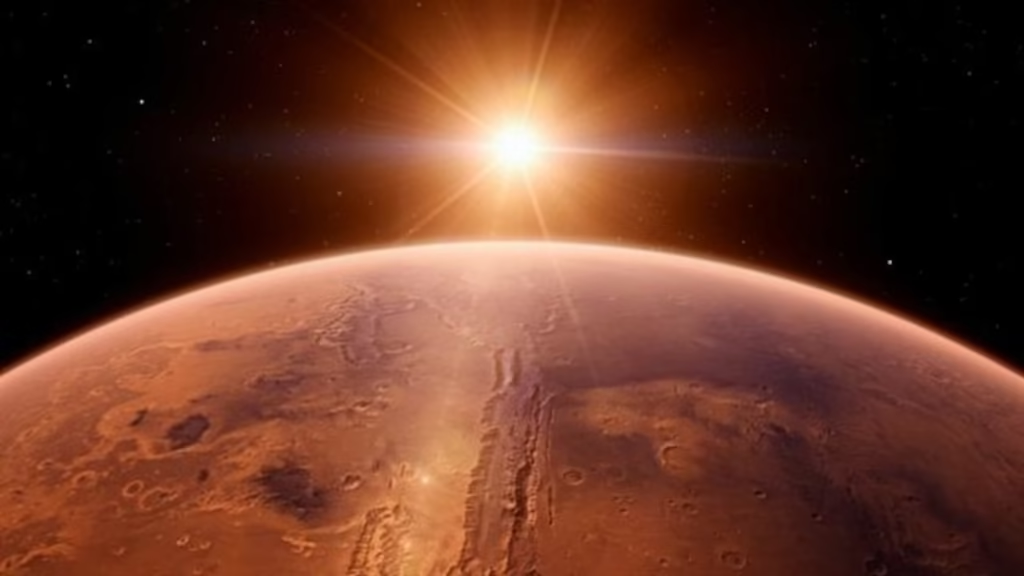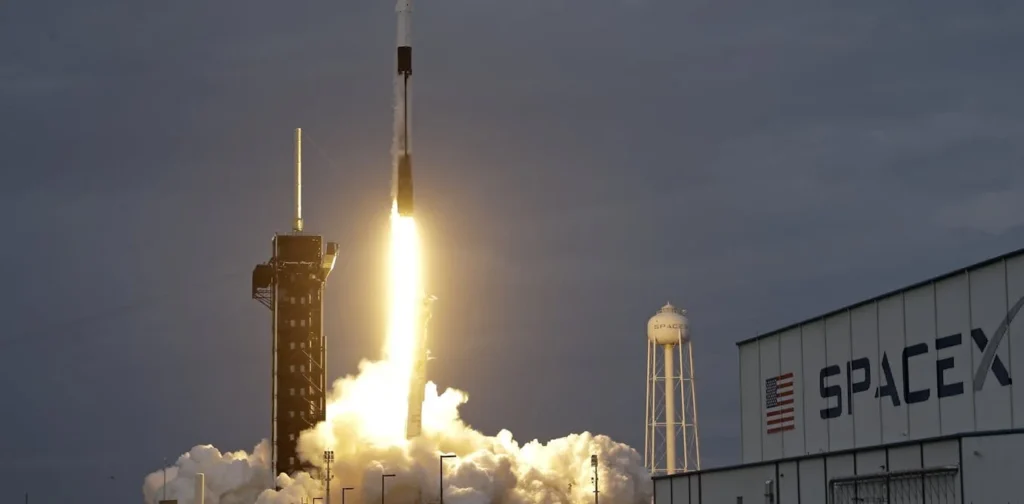The concept of Mars colonization has fascinated humanity for centuries, with its promise of expanding our presence beyond Earth and ensuring the long-term survival of our species. As the most Earth-like planet in our solar system, Mars has long been the focal point of both scientific exploration and speculative fiction. Today, the idea of establishing a permanent human settlement on Mars is closer to reality than ever before, driven by advances in space exploration, technology, and our growing understanding of the Red Planet. In this blog, we’ll explore the history of Mars colonization, the challenges we face, and what the future holds for humanity’s ambitions to colonize Mars.
1. The History of Mars Exploration

Before we discuss the future of Mars colonization, it’s important to look back at the history of our exploration of the Red Planet. From early telescopic observations to modern robotic missions, the journey toward understanding Mars has been a long one.
– Early Observations and Speculations
The first known observations of Mars were made by ancient civilizations using rudimentary telescopes. Early astronomers such as Galileo Galilei and Johannes Kepler made initial observations of the planet, but it wasn’t until the 19th century that Mars truly captured the public’s imagination. In the 1800s, Italian astronomer Giovanni Schiaparelli and American astronomer Percival Lowell speculated that Mars might have canals, fueling the idea of an advanced civilization on the planet. These ideas, though later debunked, played a significant role in shaping public interest in Mars.
– The Space Age: Robotic Exploration
With the dawn of the space age in the 20th century, missions to Mars became a reality. In 1960, the Soviet Union launched the first successful mission to Mars, though it failed. The real breakthroughs came with the NASA Mariner program. Mariner 4, launched in 1964, sent back the first close-up images of Mars in 1965, showing a barren, cratered landscape.
The 1970s saw two iconic NASA missions: Viking 1 and Viking 2, which landed on Mars in 1976 and conducted experiments to search for signs of life. These missions revealed that Mars had a cold, dry environment, but they also provided evidence of ancient riverbeds and a history of liquid water, sparking further interest in the possibility of life on Mars.
– Recent Robotic Missions
In the 21st century, Mars exploration reached new heights with a series of successful robotic missions. The Spirit and Opportunity rovers, launched in 2003, vastly increased our understanding of Mars’ geology, atmosphere, and potential for supporting life. In 2012, NASA’s Curiosity rover landed on Mars and began exploring the Gale Crater. Curiosity’s findings, including evidence of ancient water and organic molecules, reignited speculation about past life on Mars.
The Perseverance rover, launched in 2020, has taken the search a step further by collecting soil samples, analyzing the atmosphere, and preparing for the eventual return of Martian rock samples to Earth. Additionally, the Ingenuity helicopter, which accompanied Perseverance, marked the first successful controlled flight on another planet.
2. The Challenges of Mars Colonization
While Mars presents a promising target for colonization, it poses many challenges due to its hostile environment. To establish a permanent human presence, we must overcome significant hurdles, including the planet’s harsh conditions, the need for life support systems, and the vast distance between Earth and Mars.
– Harsh Environmental Conditions
Mars is a harsh, inhospitable world for human life. Its atmosphere is 100 times thinner than Earth’s, composed mostly of carbon dioxide with only trace amounts of oxygen. The thin atmosphere offers little protection from the Sun’s harmful radiation, and temperatures on the surface can drop as low as -195°F (-125°C) at the poles. Dust storms, which can cover the entire planet, also pose a significant challenge, potentially disrupting communication and power systems.
– Life Support and Habitats
To survive on Mars, humans will need a reliable life support system that provides breathable air, drinkable water, and food. Creating sustainable habitats will be a critical part of any Mars colonization effort. One proposed solution is the construction of habitats beneath the surface, where they would be protected from radiation, temperature extremes, and dust storms. These habitats could be built using locally available materials, such as Mars’ abundant supply of carbon dioxide and water ice.
Another idea involves building domes or greenhouses on the surface of Mars, designed to maintain a livable environment inside. Such structures could provide a safe haven for astronauts and could even support agriculture, allowing for food production and oxygen generation.
– Radiation Exposure
Mars’ lack of a protective magnetic field and its thin atmosphere mean that it is exposed to higher levels of cosmic radiation and solar radiation than Earth. Prolonged exposure to this radiation can cause serious health issues, such as increased cancer risk, radiation sickness, and damage to the human central nervous system. Shielding habitats with thick layers of Martian soil or other materials will be necessary to protect inhabitants from radiation.
– Distance and Transportation
The vast distance between Earth and Mars—averaging about 225 million kilometers (140 million miles)—presents another major obstacle. A journey to Mars can take anywhere from six to nine months, depending on the position of the planets. The long travel time means that astronauts will need reliable spacecraft and systems to ensure their safety and well-being during the journey.
In addition, there is the challenge of returning from Mars. With the planet’s low gravity and lack of a proper infrastructure, launching spacecraft off the Martian surface will require significant resources and technology. Developing the technology for reusable rockets, fuel production, and life-sustaining systems will be crucial for successful Mars colonization.
3. The Role of Private Companies in Mars Colonization

While NASA and other space agencies are at the forefront of Mars exploration, private companies have played an increasingly important role in the development of Mars colonization technology. Companies like SpaceX, Blue Origin, and Boeing are investing heavily in the technology needed for interplanetary travel and Mars settlement.
– SpaceX and the Starship Program
SpaceX, founded by Elon Musk, is perhaps the most ambitious of the private companies working on Mars colonization. Musk’s vision of making humanity a multi-planetary species centers around the development of the Starship spacecraft, designed to carry large numbers of people and cargo to Mars and beyond. The spacecraft is intended to be reusable, significantly reducing the cost of space travel and enabling the mass transportation of settlers to Mars.
SpaceX has already made great strides with its Starship prototype, conducting successful test flights. Musk has frequently stated his goal of sending humans to Mars in the 2020s, with the ultimate aim of establishing a self-sustaining colony on the planet. While the timeline remains optimistic, the progress of SpaceX’s Starship program has brought the dream of Mars colonization closer to reality.
– NASA’s Artemis Program and Mars
NASA’s involvement in Mars exploration also plays a critical role in colonization efforts. While NASA’s current focus is on returning humans to the Moon through the Artemis program, the agency views the Moon as a stepping stone for future Mars missions. NASA aims to develop the technology and experience needed to send astronauts to Mars in the 2030s, with a goal of establishing a permanent human presence on the Red Planet by the 2040s or 2050s.
NASA’s Mars Sample Return Mission, in collaboration with the European Space Agency (ESA), aims to return Martian samples to Earth by the early 2030s, which will provide more detailed information about the planet’s geology and potential for supporting life.
4. The Future of Mars Colonization
The future of Mars colonization is full of potential, but it will require unprecedented levels of international cooperation, technological innovation, and human resilience. Key milestones to look for in the coming decades include:
– Robotic Precursors and Infrastructure
Before humans set foot on Mars, numerous robotic missions will pave the way for colonization. These missions will focus on mapping resources, building infrastructure, and testing the viability of technologies such as in-situ resource utilization (ISRU), which allows for the extraction of resources from the Martian environment, such as water ice and carbon dioxide. These efforts will help establish the necessary groundwork for human settlement.
– The First Human Missions to Mars
The first human mission to Mars will likely be a landmark achievement, requiring international collaboration, large-scale funding, and extensive preparation. These early missions will focus on scientific exploration, technology testing, and the construction of basic infrastructure. The success of these missions will determine the future trajectory of Mars colonization.
– Sustainable Colonies
In the long term, the goal of Mars colonization is to establish sustainable, self-sufficient colonies capable of surviving without constant resupply from Earth. This will require advanced technologies for food production, water recycling, energy generation, and waste management. Developing a Martian economy and ensuring that colonies can sustain themselves for generations will be the ultimate test of humanity’s ability to colonize Mars.
Conclusion: A New Frontier for Humanity
Mars colonization is no longer a distant dream or science fiction; it is becoming an achievable goal thanks to the remarkable advancements in space technology and our understanding of the Red Planet. However, the challenges are immense, ranging from harsh environmental conditions and radiation exposure to the vast distances involved. Nevertheless, the collaboration of space agencies and private companies, along with the continuous development of new technologies, makes the possibility of Mars colonization increasingly plausible. As we look toward the future, humanity stands on the brink of becoming a multi-planetary species, with Mars as our first great step into the cosmos.



